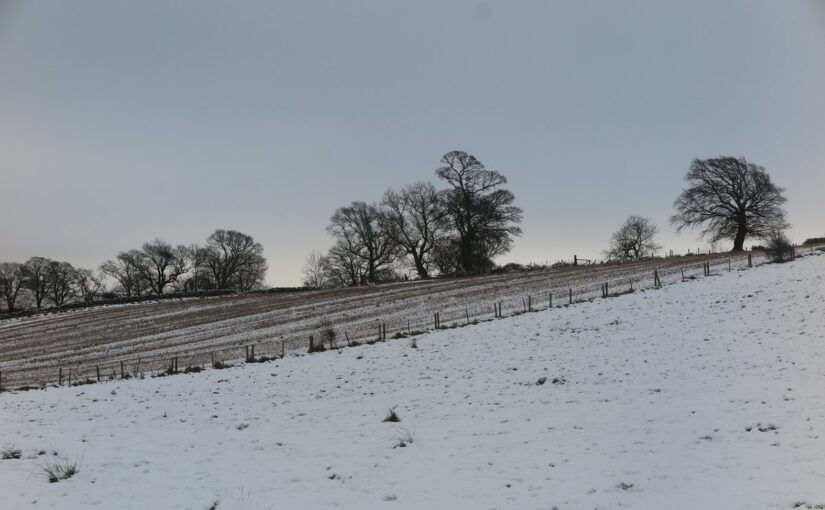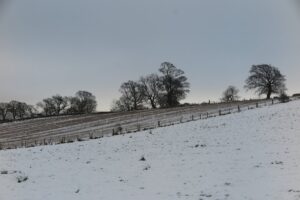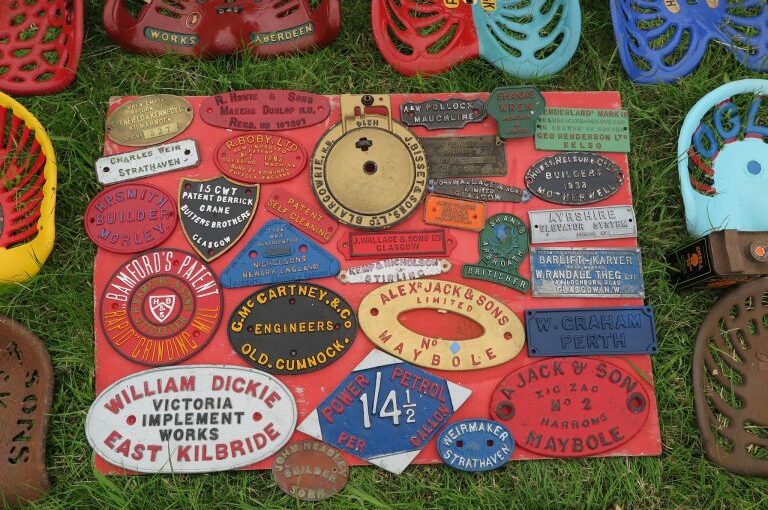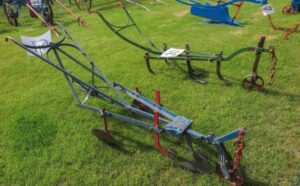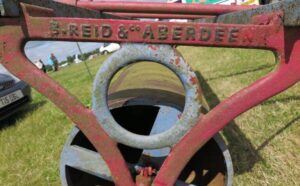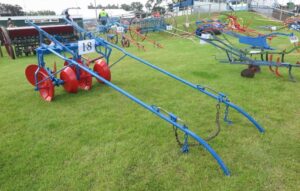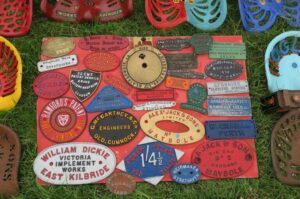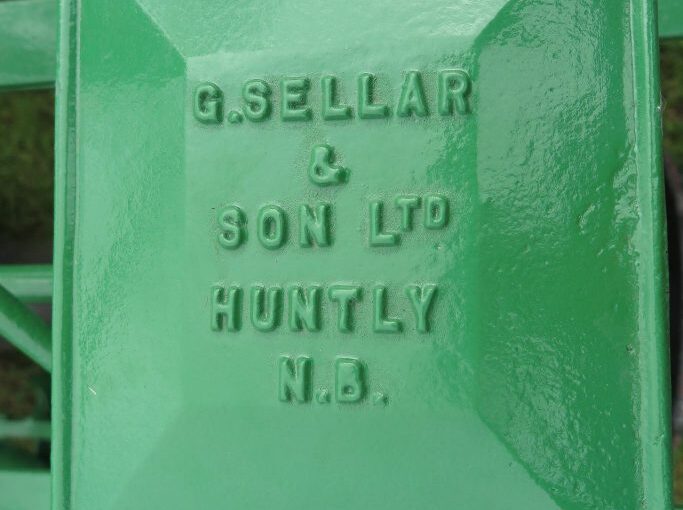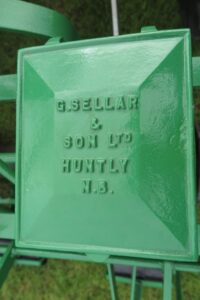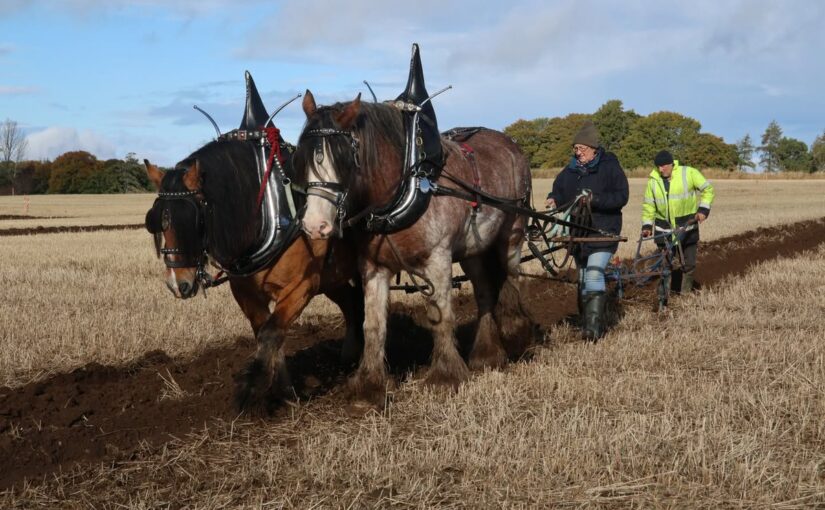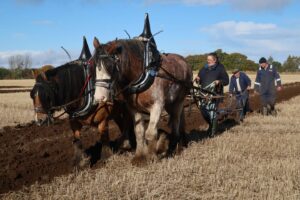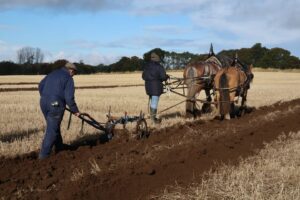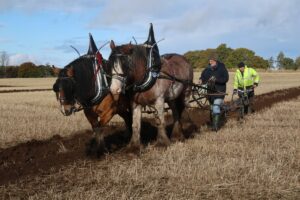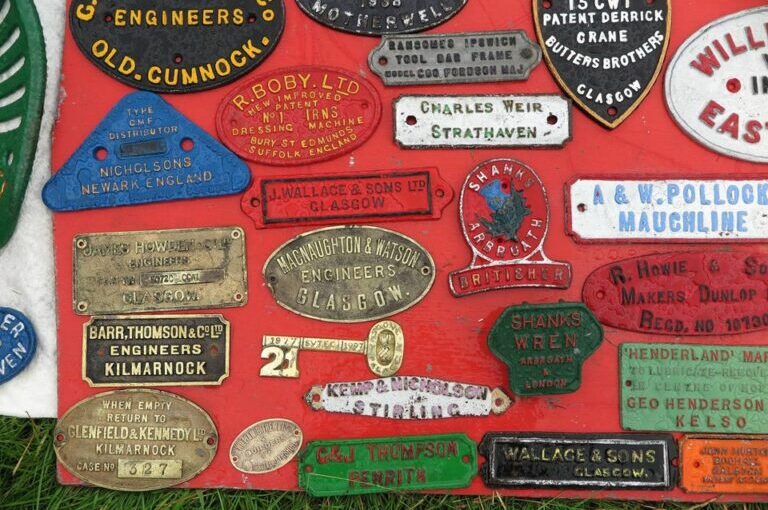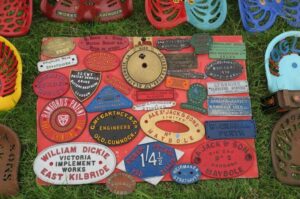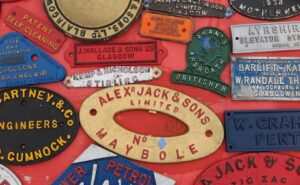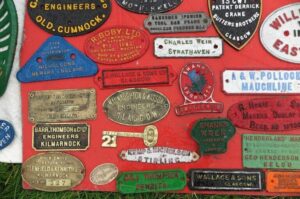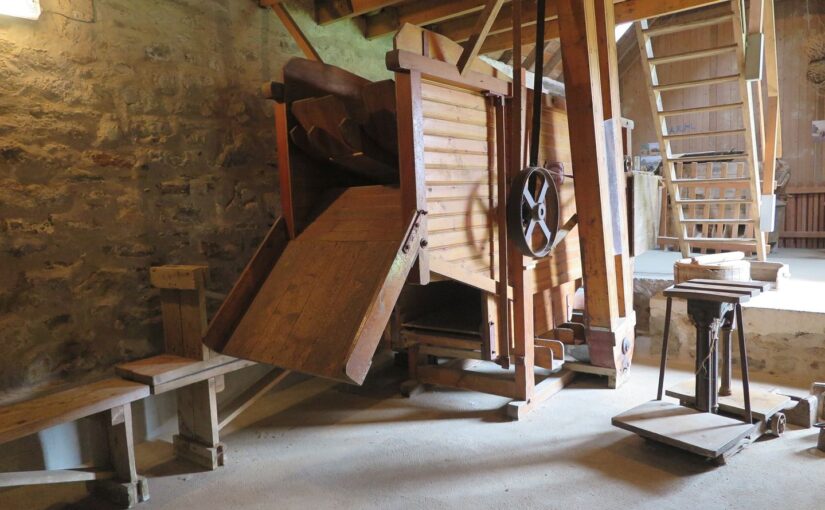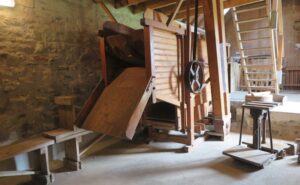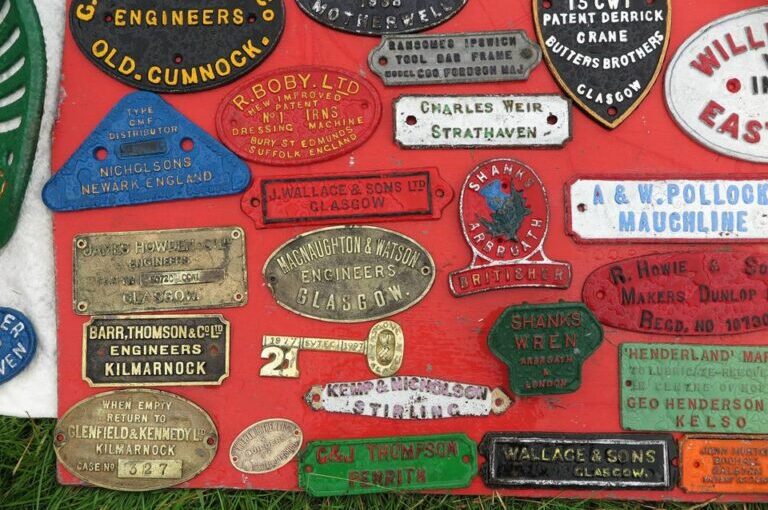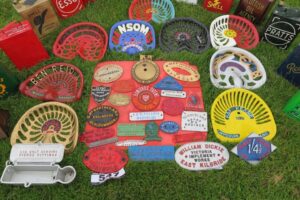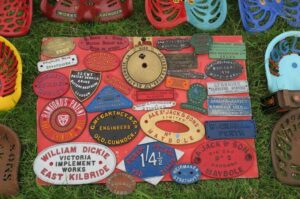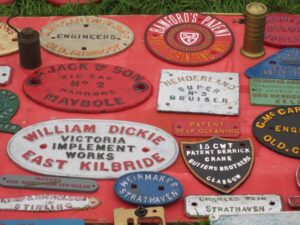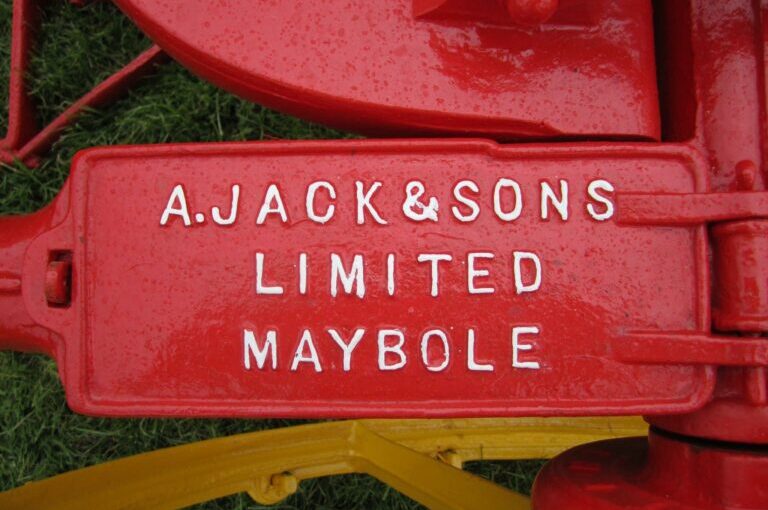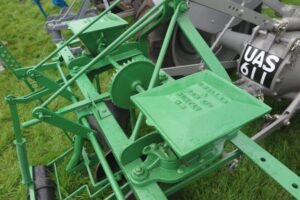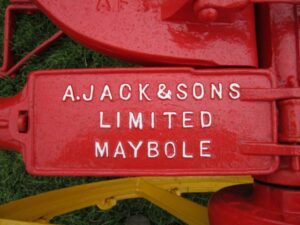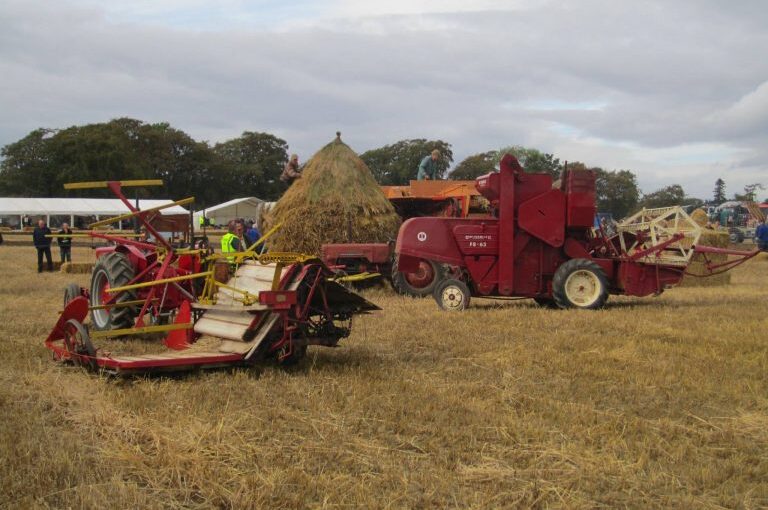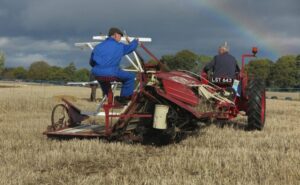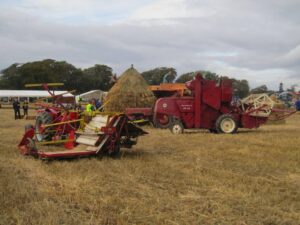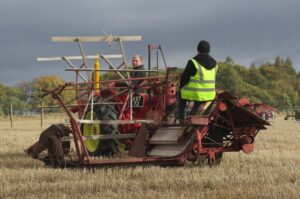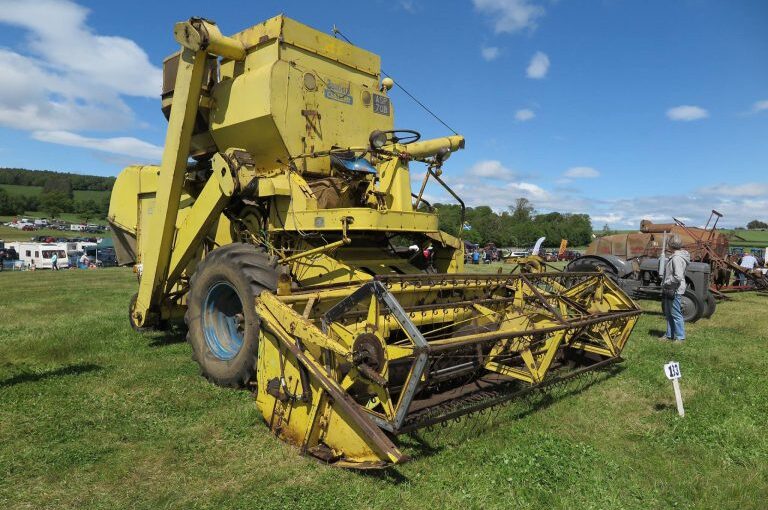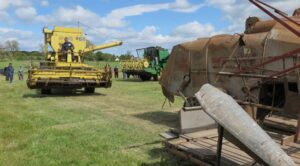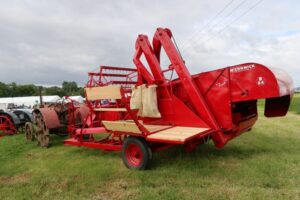The winter can throw a number of challenges for holding ploughing matches. There can be wet weather, or prolonged wet weather as well as snow in the run up to a match. Some matches were advertised as being held on a particular date, and if the weather was unsuitable, suggested an alternative one.
Some matches had to be cancelled at short notice as the weather had made a turn for the worse in the days before it was due to take place. In 1925 there were a number of matches throughout the country – especially in the north-east – that had to be cancelled and rescheduled, sometimes at short notice.
Let’s look at a few of the cancellation notices in the local newspapers:
“The Forglen ploughing match (postponed) will take place on the farm of Waulkmill on Wednesday, the 14th January, or first suitable Wednesday. J. Webster, Secretary.” (Aberdeen press and journal, 10 January 1925)
“Postponed Chapel of Garioch match
The annual ploughing match under the auspices of the Chapel of Garioch Ploughing and Hoeing Association, which had been postponed from the 3rd inst owing to the snowstorm, was held in a field at Upper Middleton, Balquhain, granted for the purpose by Mr Mitchell. There were fifteen entries, and the ploughing all over was very creditable.” (Aberdeen press and journal, 13 January 1925)
“Heaviest snowfall of winter
Snow ploughs out in Aberfeldy District
Following 13 degrees of frost yesterday the most severe snowstorm of the winter prevails at Pitlochry and North Perthshire to-day. Overnight three to five inches of snow fell, and with heavy drifting on the uplands wreaths two to four feet deep have been formed.
Outdoor work is suspended. The Scottish championship ploughing match at Logierait on Wednesday will probably have to be postponed.” (Dundee evening telegraph, 23 February 1925)
“Western District of Atholl ploughing match postponed till Wednesday, 18th March, on account of weather conditions.-James Marshall, honorary secretary.” (Dundee courier, 13 March 1925)
“Middle Deeside Champion Ploughing Match
The Middle Deeside champion ploughing match at Pittenkerrie, Glassel, which had to be postponed on account of the flooding of the ground, is now to take place on Saturday of this week.
Entries are in excess of the rigs available, and include well-known champions from Alford, Dufftown, Keith, Leochel-Cushnie, Marycultuer, Midmar, Rhynie, Tarland, Towie, and several Deeside “cracks”. Being the final rally of the season, some excellent work is expected.” (Aberdeen press and journal, 18 March 1925)
“Atholl ploughing match
The annual ploughing match under the auspices of the Western District of Atholl Agricultural Association took place to-day, having been postponed from last Saturday on account of the storm earlier in the week.
A suitable field for the occasion was placed at the disposal of the committee by Mr Alex. Petrie, Strathgarry Farm, and there was a good entry.
The arrangements were in the hands of the secretary, Mr James Marshall, Blair Atholl, and a representative committee.” (Aberdeen press and journal, 18 March 1925)
“Durno Ploughing and Hoeing Association ploughing match to be postponed till 16th January 1926. Bridgend, Pitcaple. A. McBeath, Secy.” (Aberdeen press and journal, 18 March 1925)
“Kildrummy and Towie Ploughing Match
Owing to Snowstorm, this match has been postponed until further notice. Walter Beattie, Secretary.” (Aberdeen press and journal, 22 December 1925)
“Cairnie Ploughing Association Match is postponed till after the New Year. Date later. John Rule, Secretary, Whitehill.
Kincardine O’Neil and Torphins ploughing match advertised for 26th inst is postponed until further notice. W. Aitken, Secy.
Strathbogie Farmer Club. Champion ploughing match will be held at Corsiestane Fm 16th January, 1926, or first suitable Saturday.
Ythanside Farmers’ Club. The annual ploughing match has now been fixed for Wednesday, 6th January. If day unsuitable, first Wednesday after. Further entries welcomed. J. Walker, Secretary.” (Aberdeen press and journal, 22 December 1925)
“Ythanside Farmers’ Club
Ploughing match advertised for to-day (Saturday) postponed till further notice. J. Walker, Secretary” (Aberdeen press and journal, 19 December 1925)
“Newton St. Boswells and District Farmers’ Club
Ploughing match at Clarilaw postponed to 9th January, 1926.
Present entries stand. Further entries taken to 4th January.
A special prize of a silver cup for grooming has just been presented by Mr Peter McIntosh, Linlithgow. John MacGilvray, Secretary, Newton St Boswells.” (Aberdeen press and journal, 19 December 1925)
